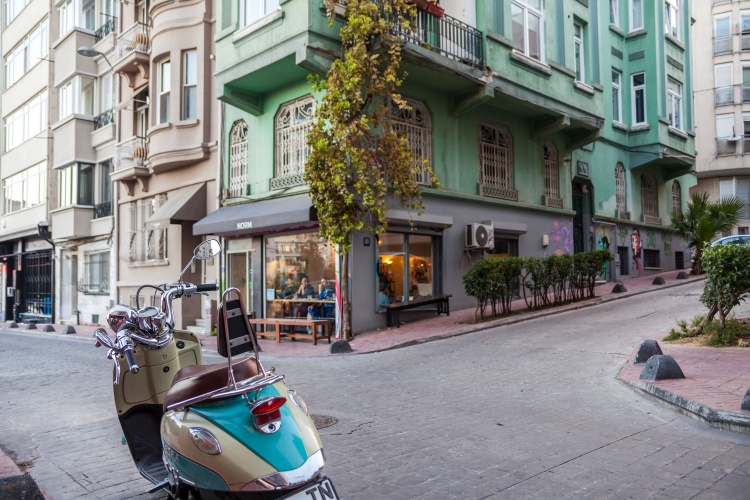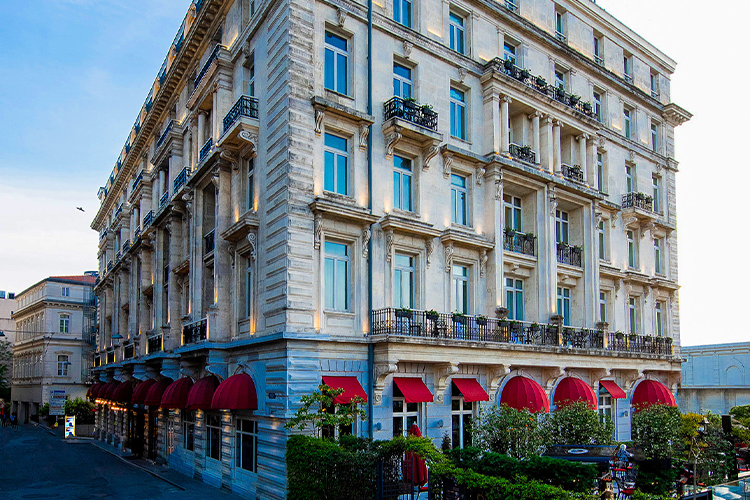The crowded streets and lively atmosphere of İstanbul often overshadow the quiet moments in the city. The fast steps of people racing against time and the sounds rising from the streets are an indication of the never-ending pulse of the city. However, if you can slow down the flow of time a little in this fascinating city, you can also see the beauties that are waiting to be discovered and the stories that remain deep inside. In that case, we are inviting you to a discovery route that fits the concept of slow travel, where you can focus on the quiet areas of the city. The starting point of this enjoyable route is Pera Palace Hotel, which is located in the heart of İstanbul and carries traces of the past. Then, let the journey that slows down the time, full of discoveries and special experiences begin!
Take a Peaceful Walk from Pera to Galata

This day that is full of discoveries begins in the nostalgic and dazzling atmosphere of Pera Palace Hotel. After having a scrumptious coffee that will warm you up at the hotel, one of the most special structures of the city, it is time to turn your route to the timeless streets of İstanbul, where the past and the present come together. Galata, which is usually known for its crowds, is surprisingly calm in the morning hours. As you walk from Pera to Galata with the first light of the day, you can start to discover the hidden tranquility in the quiet streets of the city. As you walk with unhurried steps among tiny art workshops, second-hand booksellers and streets that have a scent of history, nostalgic buildings and unexpected surprises might greet you at every corner.
Get Lost in the Slopes of Cihangir

You can walk from Galata to Cihangir, which is the heart of İstanbul. Located close to the city center, Cihangir provides you with a peaceful haven for those who would like to get away from the chaos of the city with its narrow streets and historical apartment buildings. You can sit in a cute cafe in Cihangir and watch the people passing by. You can enjoy the tranquility of the surroundings while sipping your coffee.
Discover the Colorful Streets of Balat

If you would like to go a little deeper into the European Side, all you have to do is follow the Fener-Balat line. Known as one of the most colorful neighborhoods of İstanbul, Balat resembles a work of art with its colorful Greek houses, stone streets and churches. To spend a pleasant afternoon on the streets of Balat that are filled with cats, you can walk along the coast from Ayvansaray to Balat, then sit on a bench and watch the liveliness of the neighborhood.
Watch the Sunset in Moda

Getting on a ferry is at the top of the list of things to do in İstanbul. If you would like to continue your journey from Pera to Kadıköy, you can take a ferry from Eminönü or Karaköy. After all, ferry travel is one of the most enjoyable ways to surrender to time in İstanbul. After arriving at Kadıköy Pier, you can take a pleasant walk towards Moda. While strolling around on the beach, you can quietly watch the serenity that the pastel tones reflected in the sky at sunset add to the city.
Complete the Pleasant Route at the Point You Started, at Pera Palace Hotel…

You can complete this pleasant and peaceful route at the point that you started and leave the tiredness of the day behind in the peaceful atmosphere of Pera Palace Hotel. You can feel the rhythm of time slow down the moment you step through the door of this historical hotel, built in 1892 to host Orient Express passengers. It is also possible to feel like you have been teleported to the past as you wander through the wide corridors of the hotel and visit the rooms that have hosted famous names.
You can follow the traces of Agatha Christie’s famous novels in room 411 at the hotel and you can join Ernest Hemingway’s memories at the Orient Bar. You can relieve the sweet tiredness of the day in the quiet lounges of the hotel and if you wish, you will have the opportunity to try the delicious food that is served at the Agatha Restaurant.
Pera Palace Hotel is a magical stop that has left its mark on the memories of not only Istanbulites but also guests from all over the world. You can contact the Pera Palace Hotel to experience this fascinating atmosphere, witness the past by staying in its historical rooms, or discover the unforgettable flavors of its distinguished cuisine.

